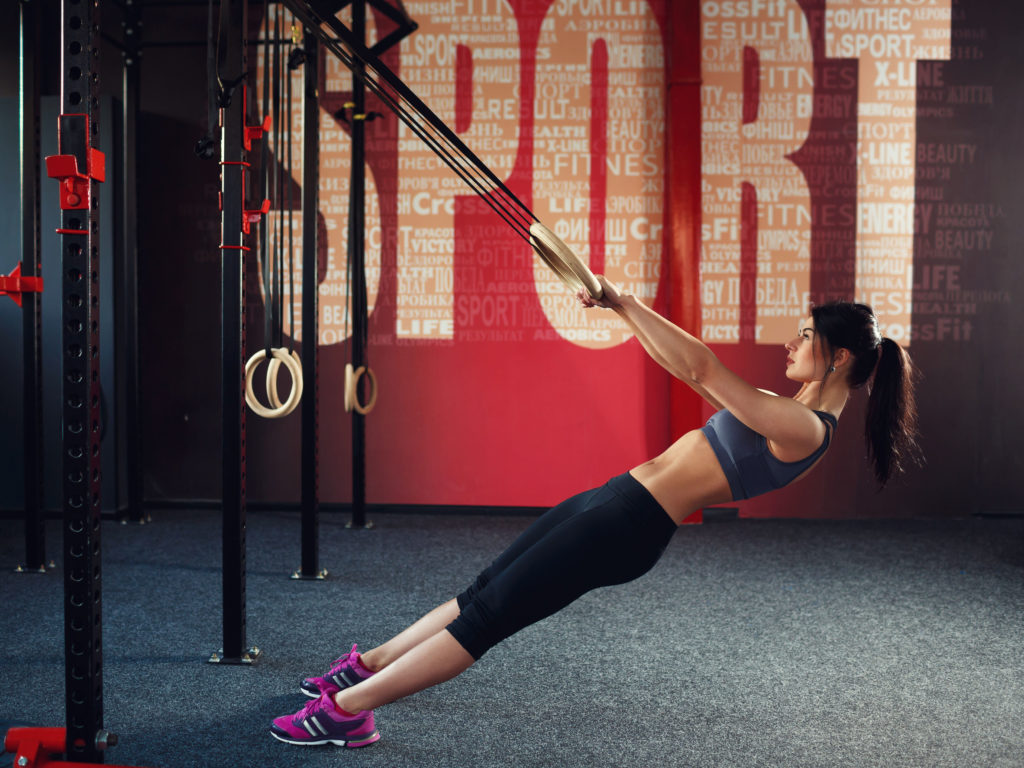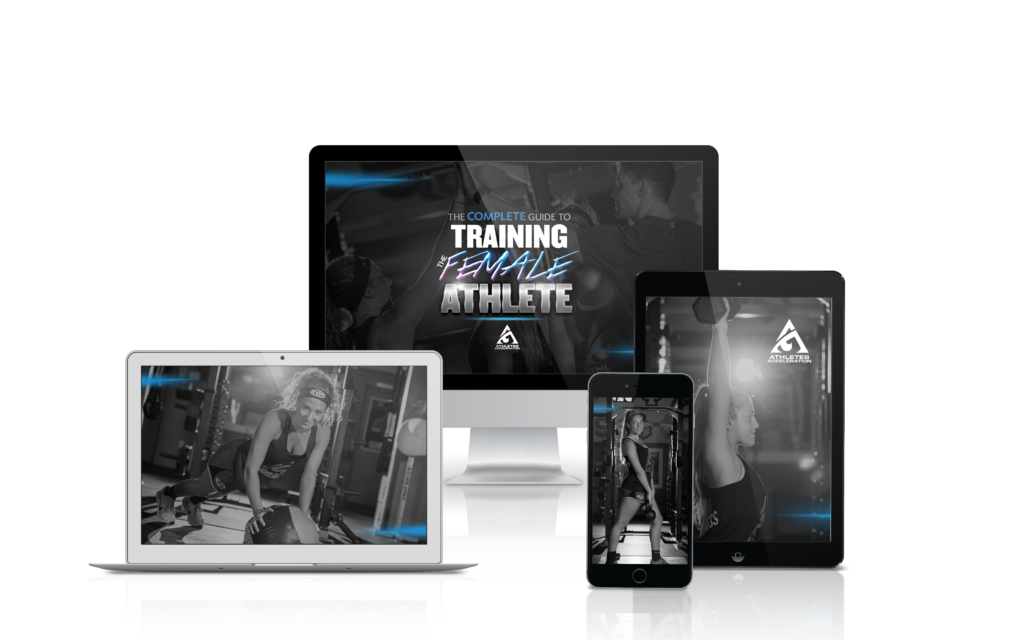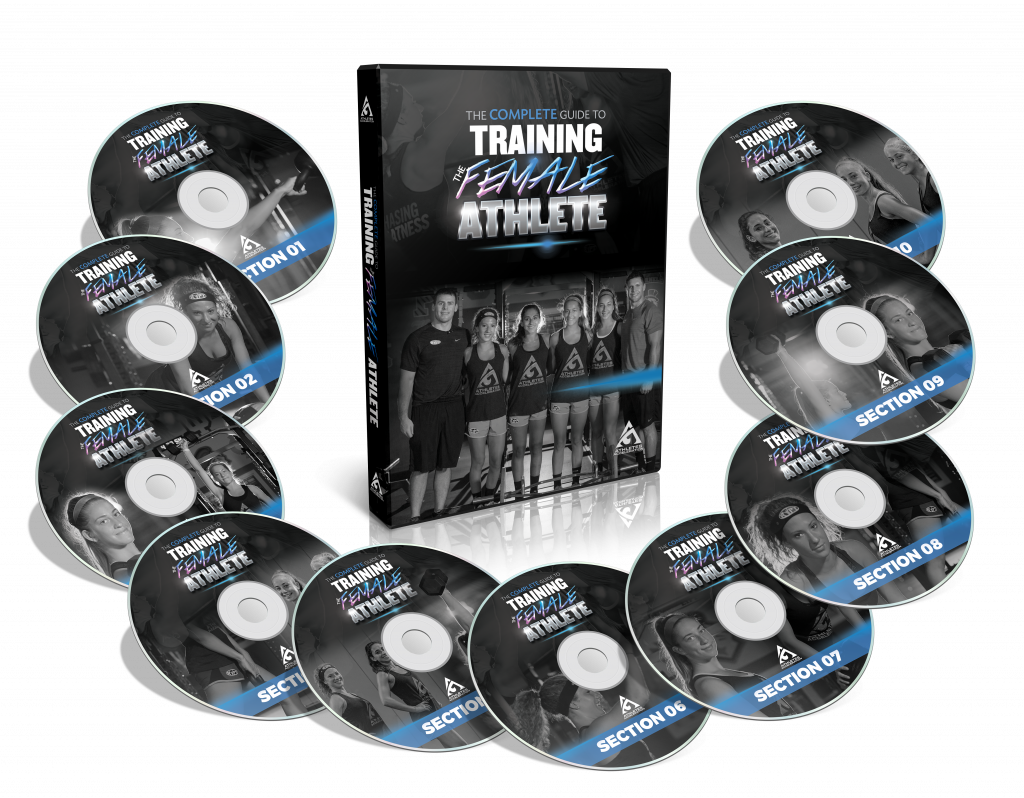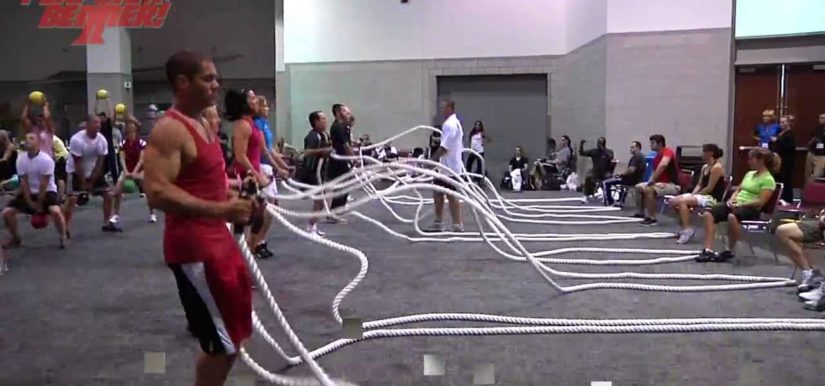I gain a lot of satisfaction training females and I have long championed the approach that, contrary to much of the mainstream, they can (and should) “train like the boys.” You know, in the gym, using barbells and stuff.

In my eights years as a coach at Cressey Sports Performance (and now, at CORE in Boston) I work with female athletes and non-athletes alike on a weekly basis and try my best to encourage them to push the barrier, focus on performance-based goals, and aim higher. I don’t treat them like delicate flowers and I don’t make it a “thing” that they don’t have an Y-chromosome.
Training is training regardless of sex.
With regards to training female athletes, though, it’s surprising how barren the resource-scape is. There aren’t many options out there. Which is why I am elated that Adam Feit was willing to discuss his new resource Complete Guide to Training the Female Athlete.
I’m starting to make my way through it now, and it’s excellent so far. I’ve already filled several pages of notes in my notebook, and my female clients are totally going to hate me (more) soon.
Enjoy the interview.
Tony Gentilcore (TG): I find one of the more common mistakes coaches make with training female athletes is assuming that because they’re a female that they HAVE to train differently then men. I find this to be unfortunate. I feel it sets a bad connotation from the get go and sets the standard that “girls don’t train like boys.”
Do you agree?
Adam Feit (AF): 100%. In fact, that’s why we created the Complete Guide to Training the Female Athlete. Coaches will realize “Hey! That doesn’t look so far off with what I do with ALL my athletes.”
Every athlete needs to squat, bend, push, pull, plant, pivot, rotate and turn. Squats are squats and deadlifts are deadlifts. (And you love deadlifts, don’t you Tony?)
Everyone needs to apply force quickly, stay healthy and sustain their performance over a period of time.
When we first started RYPT almost five years ago, we thought we were going to be “lights out” with football players. Just like how every aspiring fitness professional is going to ONLY work with professional athletes, amirite?
Bobby and I were both All-Americans in football (<—Note From TG: yeah, well, I once held my high-school record for most innings pitched and shut-outs in a season) and I had spent my entire career with football strength and conditioning.
But guess what? The football players trained at school with their position coaches. They weren’t ALLOWED to actually train with someone who knew what they were doing.
But you know who was? Females.
I have coached in NINE different states in my 10 years of coaching. I have never lived in an area (Monmouth County, NJ) where female athletes dominate their sport and get as many college scholarships as they do here.
And with that, comes the increased risk of injury and our role as performance coaches to prevent those injuries from happening or transition them back on the field again.
But what we’re most proud of at RYPT is how we’ve created a community for female athletes to come in, train hard and FEEL the results. 80% of our clients these past five years have been female. Is it the training? Maybe. But I think it’s more.
It’s about improving their self esteem, mental strength and developing them into physical monsters.
TG: I couldn’t agree more on that last point. The empowerment and “freedom” that develops in female athletes when they’re coached well (and not treated like delicate snowflakes) is amazing.
All that said, we’d be remiss not to recognize that women don’t need to train differently then men (but sometimes they should). What ARE some of the particular things to take into consideration when training female athletes?
AF: With 3500 youth female athletes trained at RYPT thus far, the biggest things we have noticed have been loading progressions, emphasis on the posterior chain, and prioritizing the single leg.
What I quickly noticed was that our female athletes simply didn’t handle the traditional model of progressive overload as well as my male athletes. Forget percentages, readiness questionnaires and velocity tracking. They couldn’t increase their training load week to week and maintain form, speed and most of all, confidence.
Was another 5-10 lbs worth it on our last set, gambling on them failing and shattering their confidence as they began weight training?
Many times I have seen an athlete crush a set at a particular weight only to not hit a single rep with five additional pounds added on the following set. Instead of pushing more weight each and every set, we have adapted our training cycles to work on increasing volume throughout the set cycle. This form of volume accumulation allows us to still overload the athlete but in a safer manner.
Note From TG: that last point by Adam is what I mean when I talk about building a wider base (of volume) to reach a higher peak. I explain HERE.
So rather than simply going up every set, we’ve learned to keep the working weight stable for a few weeks at a time and crank up the volume through increased reps and or sets to build that confidence and get some serious work done.
Second major point is the cold hard truth of a few things that female athletes have to deal with that their male counterparts don’t have to worry so much about.
You know–just your typical quadriceps dominance, anterior pelvic tilt, more lax ligaments, and wider Q angles…
Oh, and up to 9x more likely of tearing an ACL.
Because of this, we’ve hammered the posterior chain into our warm-ups, activations and strength training work each and everyday to balance out the compensations and establish proper movement patterns needed for deceleration, re-acceleration, strength development and injury prevention.
Everyday at RYPT, we’re working a variation of a leg curl, hip lift or RDL exercise to ensure our females can recruit the right musculature to stop, slow down and speed up.
Lastly, we can’t forget the importance of the single leg.
Think of almost every jump, step, run, and swing. It almost always happens on one leg.
At RYPT, we use a variety of linear, lateral and rotational split squats and lunges in the warm-up to prepare for loaded movements later in the program. Like our double leg training, we attend to each variety of movement pattern, hip and knee dominant, as well as pushing and pulling exercises. The variety of exercise selection exposes athletes to moving in a variety of planes and through a number of different motions that also improve their awareness of their body in space. That understanding of how the body moves is helpful when the athlete is faced with a decision or a situation in a game or contest.
On Day 1: we focus on progressing our athletes into single-legged RDL variations, focusing on their proprioception and force production. This comes towards the end of the workout after we have already performed our major double leg push for the day, which is usually some sort of squat variation.
On Day 2: we focus on an auxiliary single leg push movements with variations of split squats, rear foot elevated split squats, lunges and step-ups.
On Day 3: depending on the level of the athlete and season of the year, we will perform either another double or single leg push exercise as a primary strength movement. For most beginner athletes, we start off with the hex bar deadlift and transition into a loaded barbell split squat or lunge as they get close to their competitive season.
TG: I love it. Not many things jazz me up more than seeing young female athletes breaking barriers and not relenting to lame societal norms.
I love all my athletes, but I do find training female athletes to be easier at times. They often seem more “coachable.” Can you shed some light on this phenomenon if you agree? And if you don’t I’ll just shut up…..;o)
AF: Female athletes flat out care. I worked four years in college football and one year in the NFL. I can count on one hand how many thank you cards I got from all the schools I worked with and the players I helped develop.
I’ve lost track of the amount of gifts, thank you’s and emails I’ve gotten from working with our females here at RYPT. Going from nothing to all of this really made me believe that I was making a difference in their lives.
But besides caring, female athletes are in fact more coachable. Because of their limited experience in the weight room, they have no bad habits to break. You’re not fighting the hip thrusting bench press bro or the wicked high squat sorriness like you do with most youth male athletes. I almost NEVER have to tell a female athlete that the weight is too heavy and she needs to go down. Female athletes WANT to get better and they WANT to do it right. They actively seek out our coaching and want to make the most out of their opportunity with us while they can.
TG: Okay, cliche time…but it’s needs to be asked: What are the most common mistakes or “myths” you come across when the topic of training female athletes arises?
I’m going to repurpose a great article my wife Mary Kate wrote for us last year here talking about these very issues:
What You Need To Know About Your Athletic Daughter
I’ve got the best spouse in the world. Not only was she a Division I soccer player and former college strength coach, the woman is STRONG and gets pissed when she doesn’t set a PR or gain muscle. She is the epitome of “female” strength and someone that our staff, as well as all our kids at RYPT, look up to (especially our own two little ones at home).
Remember, as coaches, we have not just the ability, but the responsibility to educate and empower our clients to become better people. Dispelling myths, trends and fads are only a few of the battles we face when working with today’s female athlete.
Complete Guide To Training the Female Athlete
More than ever, female athletes are playing sports and striving to win a scholarship.
They’re sacrificing quality training time with sports performance coaches like us to play another season of AAU basketball, club soccer and showcase softball.
So we’ve got to do OUR part and educate and empower coaches and parents alike to not only help athletes reach their potential, but also prevent them from LIMITING their potential due to injury. While we cannot prevent all injuries, experience and education have shown us we can certainly have a major hand in preventing many of them due to inadequate strength and body control.
If you’re looking for a complete system for training today’s female athlete, we hope you’ll consider the work we’ve done, the programs we’ve developed and the female athletes we have helped–3500 and counting.
Complete Guide To Training the Female Athlete is on sale NOW for $100 off the regular price. Go HERE and get better as a coach and to better serve your athletes.





.jpg)


